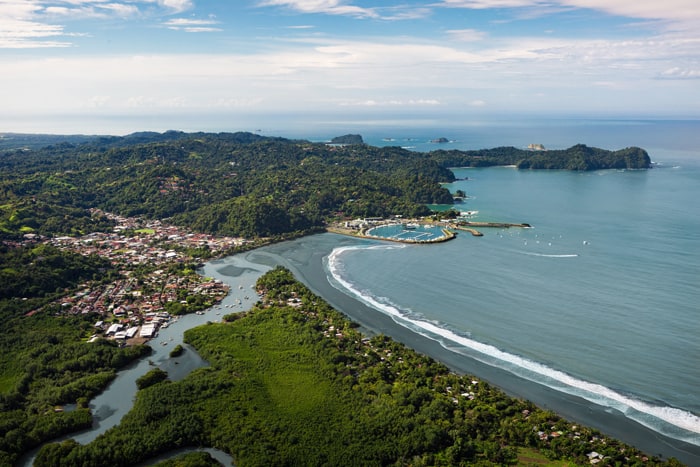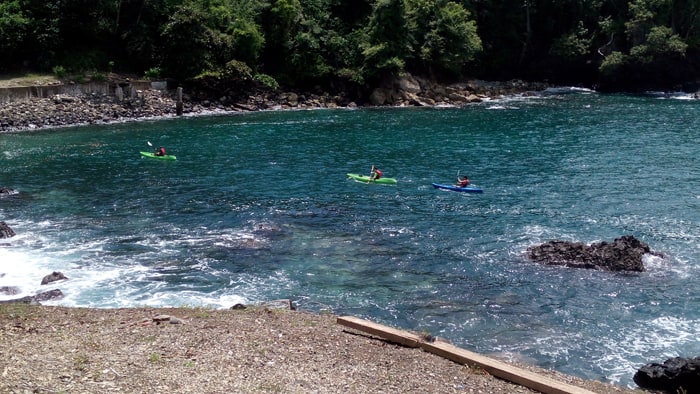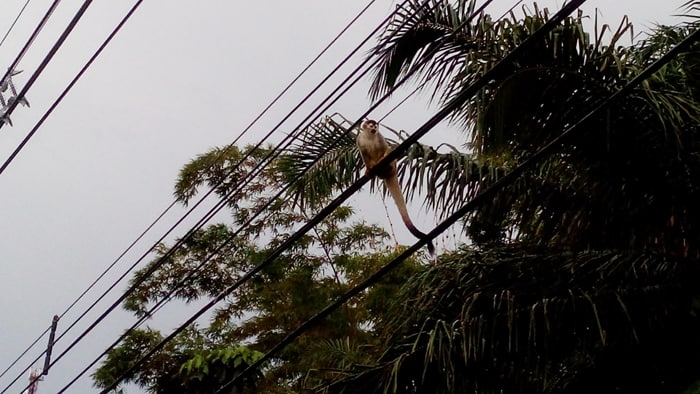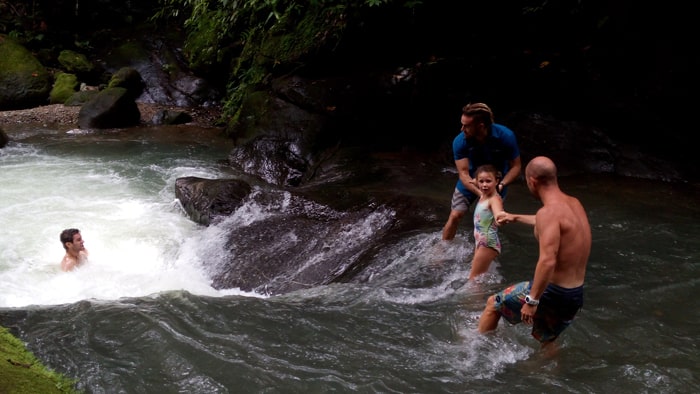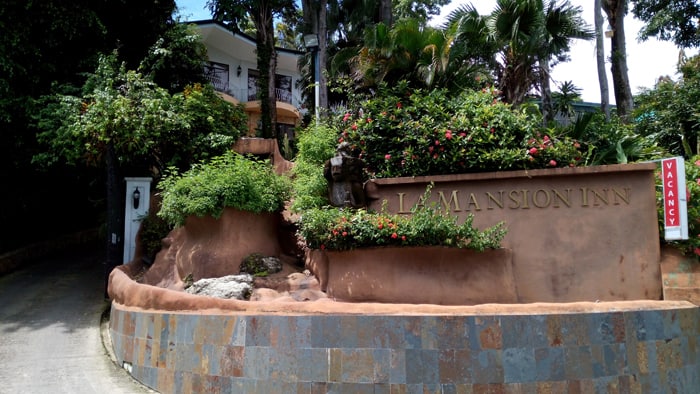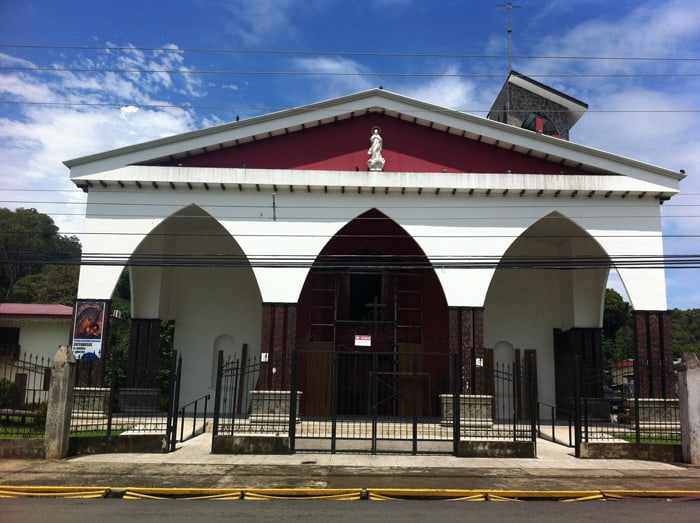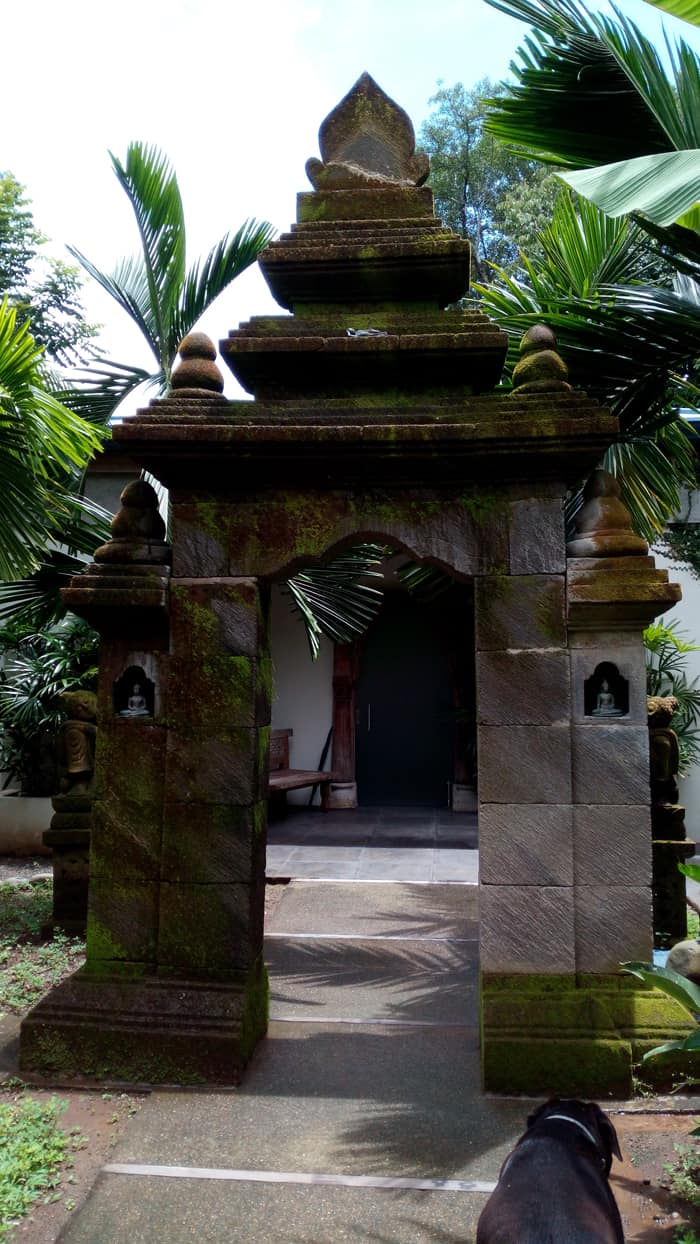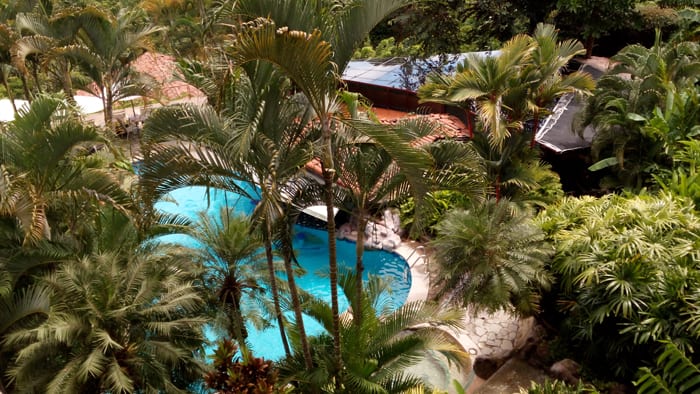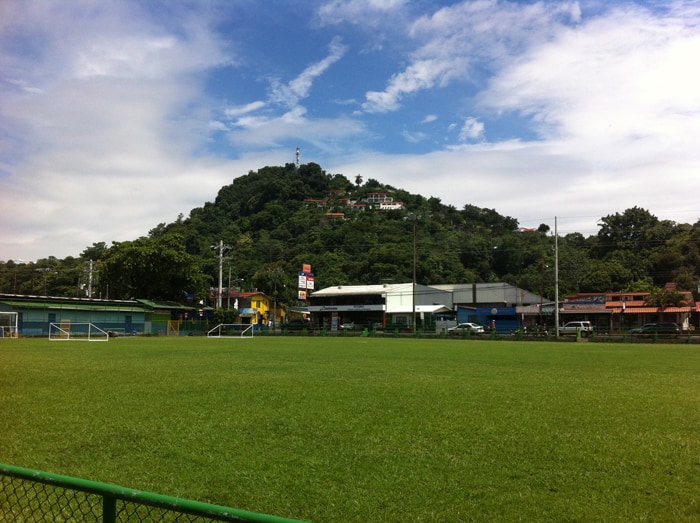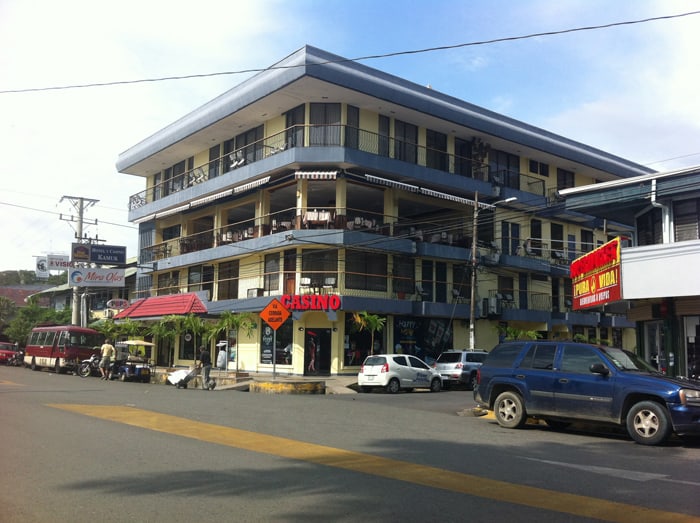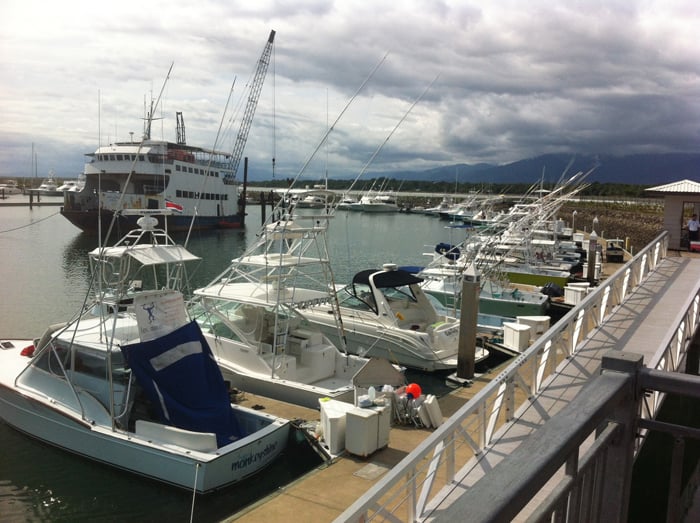MANUEL ANTONIO, Puntarenas — The first tourists to lay eyes on Manuel Antonio were apparently the crewmen of the Spanish explorer Hernán Ponce de León, who sailed into these waters in 1519. But the numerous Quepo natives on the shore put on such a display of hostility against the foreigners that he decided against landing and proceeded to safer shores farther north.
How times have changed. Today Manuel Antonio and the neighboring port of Quepos thrive above all on visitors, welcome them with open arms and are inundated with them.
Costa Rica’s Greatest Places
In this series, The Tico Times Travel section takes an in-depth look at some of Costa Rica’s greatest destinations, with multiple articles exploring the attractions of each. In August, we took you to Valle del Sol in the Central Valley. Starting today and for the next three weeks, we’ll visit one of Costa Rica’s finest gems, the hillside enclave of Manuel Antonio and its seaside neighbor, Quepos.
PART I: Valle del Sol
PART II: Quepos/Manuel Antonio
• Today: Overview
• Oct. 6: Hiking
• Oct. 10: Marina
• Oct. 13: Adventure
• Oct. 17: History
• Oct. 20: Hospitality
________________
According to data from the National System of Conservation Areas (SINAC), Manuel Antonio was the most visited national park in Costa Rica in 2015, with 418,041 visitors, followed by Poás Volcano, with 370,176.
The two parks sometimes trade first and second place, but Poás is a day trip from San José, with no need to spend the night. There is no comparing the volcano’s gate prices with the mountains of wealth generated by Manuel Antonio every day.
In a country obsessively dedicated to promoting tourism, Manuel Antonio is king of the hill. So why is that?
- Nature: The national park is small but loaded with animals, it’s easily walkable and it has some of the most pristine beaches in the country. There is no easier place in Costa Rica to see so much wildlife in the wild. Of course, people complain that there are too many people.
- Nurture: From the old banana town of Quepos to the national park to the hotel-rich ridge between them to the world-class marina, this region has been expertly developed — and at the same time, miraculously preserved.
The attractions
Manuel Antonio National Park is packed with monkeys, sloths, coatis, agoutis, raccoons, deer, iguanas, snakes, spiders and birds. But these same animals don’t know where the borders of the park are, so they migrate all over the area, popping up near people in unexpected places all the time. In fact, rare squirrel monkeys use the power and phone lines along the main road as a major thoroughfare.
Quepos, the port town built in the lowlands in the early 20th century, today is a bustling big town/little city with a central market, several hotels, hostels and restaurants, multiple clothing, grocery and convenience stores, an actual casino and a marina full of millionaires’ yachts, restaurants, tour companies and deluxe condos.
Quepos and the park are both at sea level, but between is a big hill with a steep, winding road, a ridge that has also come to be known as Manuel Antonio, lined with hotels, restaurants, souvenir shops, convenience stores and even a “gentleman’s club” that stretches the definition of “gentleman.”
So what is there to do here? It would be easier to name the things you can’t do. You can go deep-sea fishing, whitewater rafting, jet-skiing, parasailing, kayaking, ziplining, horseback riding. You can go on ATV tours, waterfall tours, visit hot springs, go hiking in the jungle, get a spa treatment, do yoga, stay at a great hotel, eat at good restaurants, enjoy the nightlife, of course visit the national park — and much more.
One of the few things you can’t do here is go bungee-jumping (that’s in Monteverde), but there’s always the sky-diving.
View from La Mansion Inn
Harry Bodaan, owner of the 5-star La Mansion Inn and president of the Quepos Chamber of Commerce, sat down to talk on a couch in his lobby with a gigantic piranha in an aquarium behind him, a few steps from an unbelievable view of a beautiful bay. He said this region has almost all the features that draw people to this country.
“Thirteen of the 15 reasons why people come to Costa Rica are here in the Cantón de Quepos,” he said. “The only thing we don’t have is a volcano and a museum.”
A museum is in the planning stages — restoring an old banana company building in front of the Marina Pez Vela that will showcase the history and culture of this region.
“Once we have that museum and cultural center, the only thing missing is a volcano,” Bodaan said. And we both agreed that you can’t just build a volcano.
Bodaan said one of the community’s struggles is trying to keep local park revenue from being appropriated by national authorities to support other parks.
“Some of our members have a very strong position that all of the money should go to Quepos,” he said. “Some others, like me, say let’s share the wealth at least a little bit. But after we have the infrastructure in place — parking, bathrooms, welcome center — we’re a 5-star destination, let’s make it a 5-star park.”
He said a couple of years ago the per-capita income in this area was $6,000 to $7,000 a year, and now it’s $12,000 to $14,000, and that’s “because of the hotel business, reinforced by the marina industry.” He said the Chamber’s goal is to boost the per-capita income to between $15,000 and $18,000.
The marina in particular has created highly specialized jobs, he said.
“There are 165 trades associated with the marina industry, everything from interior design, maintenance, captains, first mates, furniture,” he said. “This is what we need. We don’t need more taxi drivers, we don’t need more maids; we need specialists in the marina industry.”
Of the region in general, he said, “The problem that we have is not attracting more visitors; the problem we have is infrastructure. We get like 68 cruise ships that visit Quepos every year, bringing thousands and thousands and thousands of visitors.
“But the park can’t handle more than it can handle. It can handle maybe 2,000. Cruise ships with 2, 3, 4,000 people, they can’t handle it. We’re a little bit a victim of our own success.”
I bet there are a lot of places in this country that would like to have this problem.
View from Sí Como No
Jim Damalas of California first came to Costa Rica in 1974, and in 1976 his partners bought the property that is today the Sí Como No, another standout hotel, with rooms ranging from $350 to $500 a night.
“What’s interesting about this area, unlike Tamarindo and Jacó and Flamingo and all these other places,” Damalas said, “if you go out on a boat and you look back, it looks the same way it did in ’74. That’s what makes it unique.”
It’s also a “calle sin salida,” he noted. “Only one way in and out. And that’s a mixed blessing. On the one hand, it can create a lot of traffic issues on the holidays, but it also reduces the development.”
Sitting in his breeze-swept lobby overlooking a huge expanse of almost completely untouched forest between us and the sea, Damalas noted that there are 50 meters of maritime zone where nobody can build anything. Then there are another 150 meters where you can apply for concessions to build.
But all of that land is in a hot, buggy, flat zone that we were now looking down on.
“So you feel this right now?” he asked, indicating the delightful breeze.
“That’s why all of us, 90 percent of us, are on the ridge,” he said. “You won’t get that down behind that 50 meters of jungle, you’ll be sweating down there and getting bit by the bugs.”
The manager of operations at Sí Como No, Dennys Quiros, gave me a tour of the property (which actually has a movie theater, not to mention a sumptuous spa), and I asked him if any celebrities had been here.
He said pop star Pink (a repeat visitor to Costa Rica who got married in Papagayo) checked in one day and walked up to the poolside bar, all the other guests staring at her, and ordered a strawberry margarita.
Next thing you know, the bar was inundated with orders for strawberry margaritas.
View from Marina Pez Vela
Bear in mind that the town of Quepos was here first, that it’s the municipality that governs the entire region, and that it’s joined at the hip economically with Manuel Antonio.
But ever since the tourism boom started, Quepos has been something of a wagging tail on the bounding dog that is Manuel Antonio. There are two major businesses that don’t rely on tourism: Martec, a huge fish-farming company, and Numar/Palma Tica, a major palm oil firm. Virtually all other businesses in this area rely on visitors in one way or another.
Boris Marchegiani, director of the Gaia Hotel and Reserve and president of the local Chamber of Tourism, when asked to describe Quepos and Manuel Antonio, said, “It would be like the difference between being in Cannes or La Côte d’Azur.” If you understand that analogy, you’ll fit right in here.
“This was basically developed for tourism,” he said, referring to the hills of Manuel Antonio. “It’s mostly small hotels and pensions, so it’s got its own color and flavor.”
For years, Quepos was rarely seen as much of a tourism destination in its own right. It does have a lively casino at the Kamuk Best Western that’s open until 4 a.m., and you will see lots of backpackers here, using the busy bus terminal and taking advantage of the lower prices for lodging and food.
But Quepos got a major upgrade around 2012, when the Marina Pez Vela opened after the paralysis caused by the global financial crisis of 2008.
Today this marina is beautiful, modern and open to all — it reminds me of San Diego, with all its upscale restaurants and shops. It’s totally open to the public, meaning anyone can come here without a penny in their pocket and sit and enjoy the sunset for free. For a dollar or two, you could get an ice cream, and there are free movie nights twice a month.
Jeff Duchesneau, general director of Pez Vela, said when he came aboard in 2014, the marina had a questionable reputation in town just because it was a marina, like the gated Los Sueños up in Herradura, where the locals might not feel like they’re welcome.
Duchesneau did everything in his power to turn that perception around, and he has. Today most quepeños whole-heartedy embrace the marina and are proud to have it.
“I call this my human friction area,” Duchesneau said, standing on the seaside plaza built like an old amphitheater, where 300 people can sit on the stairs to watch movies or other performances. “This is where the Costa Rican kids and the American tourist kids start playing together and running around. And it feels right, it feels like what a marina should be in Costa Rica.”
Any complaints?
Yes, there are complaints. Many people say Manuel Antonio is “too crowded” and “too touristy.”
As noted in a previous Tico Times story on the national park, the species you see most here is Homo sapiens. It is a fact that Costa Rica’s greatest places tend to attract the most visitors, and there are good reasons for that.
Some travelers avoid Manuel Antonio because they’ve heard there are too many people there. I think they’re making a big mistake. People can be fun too, you know.
The attractions of this region may be tourism’s perfect storm — extreme biodiversity, protected park, fabulous hotels, excellent marina and omnipresent views of vast green forest and blue ocean.
I’m sure the Garden of Eden was nice with only two people in it. But if you don’t mind your paradise a little more populated, it’s hard to top this one.

